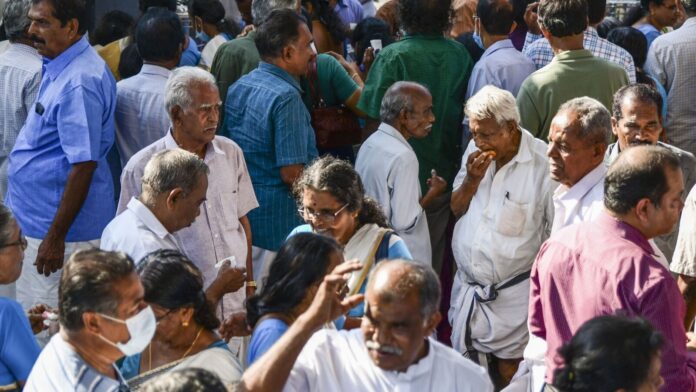The government’s decision to introduce a unified pension scheme (UPS), after consistently backing the new pension system (NPS), has left its in-house NPS cheerleaders dumbstruck. The sharp policy volte-face cannot be explained by a single factor.
But, first, what is UPS? As the first word “unified” indicates, it combines features of NPS (which is ‘defined contribution,’ the final pension payout being determined by amount invested) and the old pension scheme, or OPS (which has a ‘defined benefit,’ promising a predictable amount to pensioners every month).
The NPS, launched by the 1999-2004 Atal Behari Vajpayee government, was the culmination of a decade-long policy debate over reforming India’s creaky pension regime.
Multilateral institutions had been ‘nudging’ the government as part of long-term structural macro reforms to review the pension regime for government employees, given the increasing—and unfunded—burden on the fisc.
In January 2000, a report from Project OASIS (a government-appointed committee) recommended the NPS architecture.
The NPS has prevailed across different political regimes primarily because there was consensus on enforcing fiscal discipline and a shared recognition that scarce government resources needed productive and prudent deployment.
Made compulsory for all government employees joining on or after 1 January 2004, NPS had close to 8.5 million central and state government employees enrolled by March 2023. Yet, come August 2024, the government thought it fit to introduce the UPS. So, what has changed? Two political factors seem to be at play here.
The first is the Congress and Aam Aadmi Party promising to reintroduce the OPS during campaigns for various assembly elections, even though these promises failed to yield uniform electoral dividends.
Five states—Rajasthan, Punjab, Himachal Pradesh, Chhattisgarh and Jharkhand—reintroduced the OPS, and the Bharatiya Janata Party (BJP) has continued with the OPS after coming to power in two of those states.
The tremors are spreading to other states, with trade unions there demanding a return to the OPS. Meanwhile, op-eds and policy briefs kept warning of impending economic disaster from continued OPS adoption.
These warnings were drowned out by political imperatives, which became a bit more urgent after the 2024 Parliament election results. The BJP’s loss of Lok Sabha seats in three key states—Uttar Pradesh, West Bengal and Maharashtra—reflected the electorate’s discontent at multiple levels.
The urgency has intensified with four state assembly elections scheduled before year-end: Maharashtra, Haryana, Jharkhand and Jammu and Kashmir. An Indian Express report (shorturl.at/8Ze9p) has pointed out that during the 2024 Lok Sabha polls, the BJP’s share of postal ballots in these four states had reduced from its 2019 level, providing some indication of displeasure with the pension system.
Postal ballots are mostly cast by senior citizens, persons with disabilities, government officials either on poll duty or serving in locations removed from their constituencies, consular staff in overseas locations and defence personnel. The sharp reduction in the share of postal ballots must have given the BJP think-tank a reason to pause and reconsider its considered stand on pension.
But there is a larger issue at play here. While the BJP’s actions might betray political expediency, or demonstrate a willingness to jettison ideology for realpolitik, a deeper systemic malaise could blunt even the UPS’s utility over time.
Deepak Mohanty, chairman of Pension Fund Regulatory and Development Authority, provided a clue during a recent speech: “India ranked 45th out of 47 countries in the Mercer CFA Institute Global Pension Index-2023. The Index measures the efficacy of a country’s pension system on three parameters; our scores were: on Adequacy (41.9), Sustainability (43) and Integrity (56.5).
The scoring denotes that our pension system is reliable but lacks in providing adequate replacement income.” The former central banker has a valid point. Most pensioners need adequate post-retirement income to meet daily livelihood requirements, which include more frequent healthcare bills.
But, investments have not been yielding much. Mohanty’s same speech gives a break-up of the NPS investment pattern: 54% in government bonds, 24% in corporate bonds and 19% in equity. With 78% of investment locked in fixed-income securities, the zeal to keep interest rates low to favour corporate borrowers has depressed coupon rates and adversely impacted returns.
Weigh this against elevated and continuing food inflation as well as galloping inflation in healthcare costs. There is bound to be pent-up anger with healthcare getting increasingly privatized and costs shooting beyond the reach of most Indians.
There is a lesson in all this, which was ignored while importing ideologies without the supporting structures: either the government funds part of the pension liabilities (as it has belatedly recognized), or increases investments in government healthcare. Or it could bring in tighter regulation to discipline errant private healthcare providers and insurers.
Alternatively, it could do all three. Otherwise, even the UPS might acquire a sell-by-date.
#Pension #alert #unified #scheme #acquire #sellby #date #time
